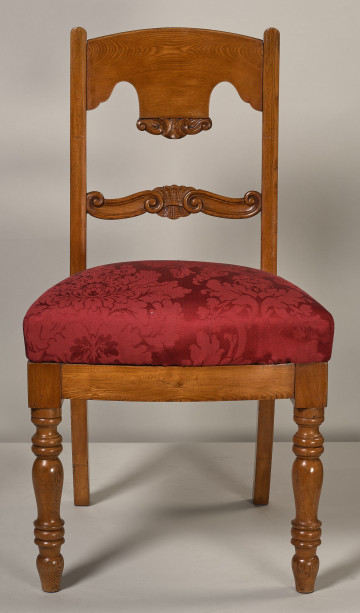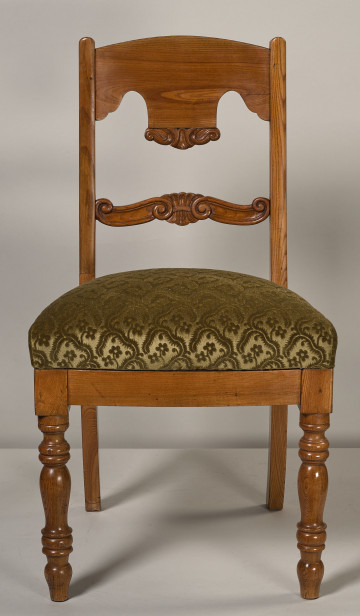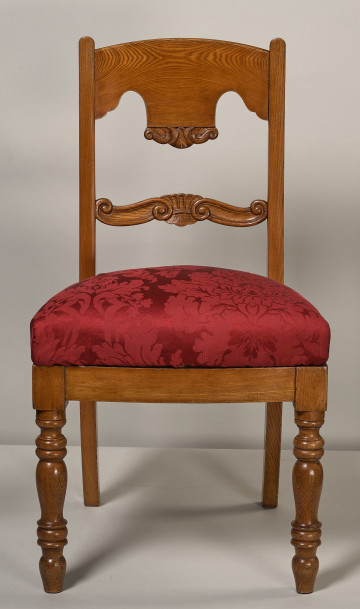
Eclectic chair
19th (?) century
Castle Museum in Łańcut
Part of the collection: Meble i wyposażenie wnętrz
A paravent usually consists of several articulated wings. The furniture fulfils the role of a movable wall used to cover or enclose a space. It is one of the most functional and handy furnishings used in residential interiors. Its name comes from the Italian 'para vento', meaning a shelter from the wind. The French borrowed the term and popularised it under the name 'paravent', meaning a screen. The first ones were constructed in China, from where they found their way to Japan. They probably appeared in Europe in the 16th century, when the expeditions of explorers and merchants aroused European fascination with the Far East. Due to the interest in the broader culture of China and Japan, the demand for Far Eastern handicrafts or their European imitations increased. It was particularly evident in arts and crafts. In Europe, screens enjoyed their most tremendous popularity in the 18th and 19th centuries. With time their style completely changed, not resembling the Far Eastern one at all, but adapting it to the needs of the current European fashion. As the 19th century progressed and awareness of hygienic needs grew, the screen often became only a functional household appliance with neutral aesthetics, like the presented three-winged piece of furniture with a frame structure filled with fabric at the bottom, glazed at the top. Its brass articulated hinges allow for convenient and quick adjustment of the angle of the wings. Teresa Bagińska-Żurawska https://orcid.org/0000-0002-9243-3967
Author / creator
Dimensions
height: 152 cm
Object type
Furniture and interior fittings
Technique
upholstery, carpentry
Material
metal, glass, fabric, silk (natural fabric), pine wood
Creation time / dating
Creation / finding place
Owner
Castle Museum in Łańcut
Identification number
Location / status

19th (?) century
Castle Museum in Łańcut

19th (?) century
Castle Museum in Łańcut

19th (?) century
Castle Museum in Łańcut
DISCOVER this TOPIC
Castle Museum in Łańcut
DISCOVER this PATH
Educational path